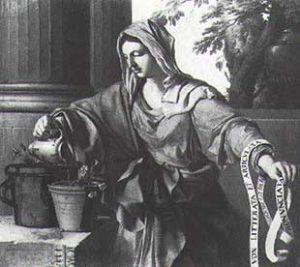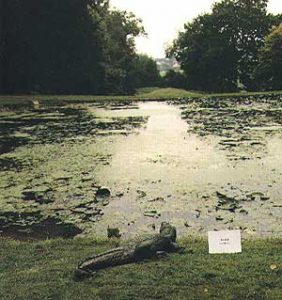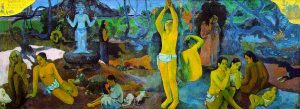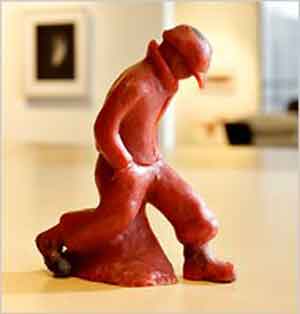TPE: Emblem 2
ICONOLOGY. Learning to capture the identifying gesture and attributes of the wide image in an emblem has as relay an ancient tradition.
 This pictorial tradition can be traced back to an engraving by Marc Antonio. It shows an almost naked woman of Giorgionesque type watering a flower. This enigmatic motif can be explained with the help of the literary tradition. It is a symbol of “Grammatica.” As the plant grows through watering so the young mind is formed through the study of grammar. In late antiquity grammar became the foundation of the liberal arts. This pictorial tradition can be traced back to an engraving by Marc Antonio. It shows an almost naked woman of Giorgionesque type watering a flower. This enigmatic motif can be explained with the help of the literary tradition. It is a symbol of “Grammatica.” As the plant grows through watering so the young mind is formed through the study of grammar. In late antiquity grammar became the foundation of the liberal arts.Rudolf Wittkower, Allegory and the Migration of Symbols, Thames and Hudson, 1977.Wittkower inventories some of the related features associated with Grammar in her allegorical representations: “an old woman carrying a vessel which is supposed to contain medicine for correcting the children’s pronunciation and a knife for sharpening their defective tongues. She also holds a file, with which the grammatical mistakes can be removed.” Ultimately, the watering of the flower became the chief motif of the allegory. |

_________
–Artist Appropriations.With the renewed interest in allegory associated with postmodernism, contemporary artists have brought photography to bear on the tradition of iconology, as in this work.
“The Tears of Concupiscence”
from the series Imprese by Olivier Richon
Other Than Itself: Writing Photography Eds. John X. Berger and Olivier Richon, Cornerhouse Publications, 1989.
How would you picture “ardent, sensuous longing” (lust)?
–From the Archive:
Here is one example of an emblem, taken from Geffrey Whitney’s Choice of Emblemes, published in Leiden by Christopher Plantin in 1586. It is the first full-fledged English emblem book in the continental style, and uses woodblocks from a number of other emblem books, the most important of which is Alciato’s Emblematum liber. (www.mun.ca/alciato/wcomm.html)
Dissidia inter aequales, pessima
(Disputes among equals are the worst)
The Swallowe swifte, dothe beare unto her neste The Grasshopper, that did no daunger feare, For that shee thought, the lov'de togeather beste, Bycause they both, observ'de one time of yeare, And bothe, did joye theire jarring notes to sounde, And neare the house they bothe, theire dwellings founde. Yet time, and tune, and neighbourhood forgotte, For perfect frende, a tyrant shee became, Which taxeth those, whome God dothe heare allotte Like gifts of grace, to winne a lasting name, Yet Envie soe theire vertues doth deface, It makes them foes, to them theie should imbrace.


 Capability. As these posts accumulate across an expanding set of categories, it is important to recall the focus of KE. Konsult learns the writing of the disaster in three dimensions: heuretics (invention), wide image (mystory), theopraxesis (capability). So far we have assumed some disaster addresses us, and devoted our attention to the heuretics of mystory, learning how to design an image of wide scope, source of our original hypothesis responding to disaster. Konsult takes up for electracy an ancient, even primordial drama: the striving to persist in one’s own being (to live), that Spinoza called Conatus, against the Overwhelming force of resistance, entropy, death. Heidegger characterized the drama as Riss, exploiting as was his craft German vocabulary, finding a term that means both Rift (split, break) and design (drawing). The drama of living derives from an irreducible opposition between Earth and World (nature and culture). Konsult is rift design (an assertion that must be developed elsewhere), taking up this enigmatic primordial experience of resistance encountered through living. Norbert Weiner, one of the inventors of cybernetics, defined life simply as anything that was negentropic, whether man or machine. We need to include in the drift of our posts a review of human capabilities, virtues, powers, the potentiality of egents which through education is realized in the service of well-being, thriving, living against disaster.
Capability. As these posts accumulate across an expanding set of categories, it is important to recall the focus of KE. Konsult learns the writing of the disaster in three dimensions: heuretics (invention), wide image (mystory), theopraxesis (capability). So far we have assumed some disaster addresses us, and devoted our attention to the heuretics of mystory, learning how to design an image of wide scope, source of our original hypothesis responding to disaster. Konsult takes up for electracy an ancient, even primordial drama: the striving to persist in one’s own being (to live), that Spinoza called Conatus, against the Overwhelming force of resistance, entropy, death. Heidegger characterized the drama as Riss, exploiting as was his craft German vocabulary, finding a term that means both Rift (split, break) and design (drawing). The drama of living derives from an irreducible opposition between Earth and World (nature and culture). Konsult is rift design (an assertion that must be developed elsewhere), taking up this enigmatic primordial experience of resistance encountered through living. Norbert Weiner, one of the inventors of cybernetics, defined life simply as anything that was negentropic, whether man or machine. We need to include in the drift of our posts a review of human capabilities, virtues, powers, the potentiality of egents which through education is realized in the service of well-being, thriving, living against disaster.

 6) Memory Exercise: Kandinsky. As illustrated by the careers of productive people, at some point an interviewer will ask about an early memory from childhood. Mystory may adopt such interviews–the kind of things people want to know about the sources and motivations of creativity–as a guide to identify similar resources in one’s own biography to bring into the wide image matrix. Exercise: read an interview with a creative person of interest, inventory the questions asked, and answer them in your own case.
6) Memory Exercise: Kandinsky. As illustrated by the careers of productive people, at some point an interviewer will ask about an early memory from childhood. Mystory may adopt such interviews–the kind of things people want to know about the sources and motivations of creativity–as a guide to identify similar resources in one’s own biography to bring into the wide image matrix. Exercise: read an interview with a creative person of interest, inventory the questions asked, and answer them in your own case.